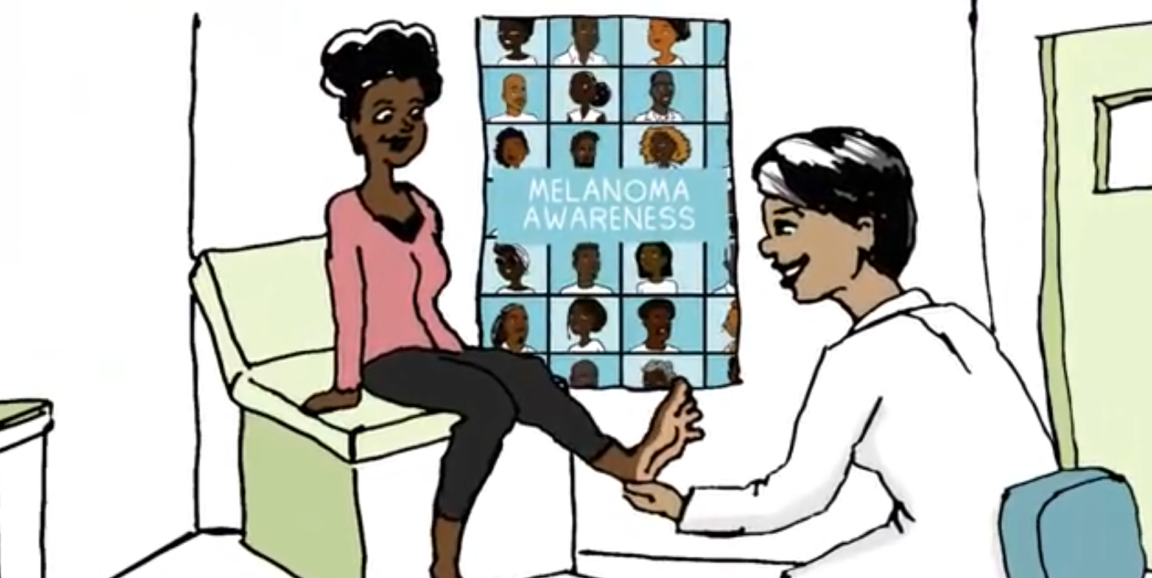It's that time of the year. With temperatures rising and outdoor graduation season in full swing, it's more important than ever to be mindful of the risks of sun exposure.
But a recent JAMA Oncology study by Stanford Medicine dermatologist and professor Eleni Linos, MD, DrPH, medical student Michael Chen and their colleagues, delivered some good news on the skin cancer front: The yearly incidence of melanoma -- the fifth most common cancer in the United States, and the most deadly type of skin cancer -- has plateaued for the first time since the 1930s.
The seemingly good news, however, hides a troubling disparity. Linos and Chen found that Black and Latino people are more likely to be diagnosed with a more advanced form of the disease, compared to white people. So what's going on? Are clinicians less likely to screen certain populations for skin cancers? Are some groups less aware of the consequences of sun exposure or the warning signs that should prompt a visit to the doctor?
I spoke with Linos and Chen to learn more about this issue.
Can you describe what prompted your study and what you learned?
Linos: Melanoma is a serious skin cancer. We wanted to understand how rates of melanoma have changed over the past decade and to understand what patient groups are most affected. We analyzed data from nearly 200,000 people diagnosed with melanoma from 2010 to 2018 in the United States and looked for correlations among their sex, race, ethnicity and other socioeconomic factors with the thickness of their tumors. This is important because tumor thickness determines how dangerous a melanoma is. The thicker the melanoma, the more likely it is to spread and potentially be lethal.
We were surprised to find that the overall incidence of melanoma had stabilized. This hasn't happened in more than 70 years in the United States. But the incidence of thick melanomas continued to increase. Unfortunately, this disproportionally affects minority communities: about 21% of Black patients, and 11% of Latino patients were diagnosed with the thickest melanomas, compared to about 6% of non-Latino white patients. Also, about 10% of people of lower socioeconomic status of any race were diagnosed with the thickest tumors, compared to about 5% with higher levels of education and income.
Why is this happening?
Chen: Our study raises concerns about disparities in melanoma awareness and access to dermatologists in Black and Latino communities. This is especially concerning given that we found, despite the plateau we observed in overall melanoma rates, the thickest tumors continue to increase in incidence. Black patients, Latino patients, and patients with lower incomes and educational levels bear a disproportionate burden of deadly melanoma.
One issue is that Black communities are often neglected in melanoma public health campaigns. This can give the false impression that there is no skin cancer risk for Black patients. We believe that public health campaigns need to focus on all populations, including those with a higher risk of more severe disease.
What other interventions can be done?
Linos: Primary prevention of melanoma is really important. For example, tanning beds are known to cause melanoma, but are still being used by too many people. This needs to stop. Our national social media-based public health campaign to reduce the use of tanning beds, funded by the National Cancer Institute, focused specifically on young women and men who use indoor tanning beds and reached 10 million people in April 2022.
Chen: Physician and patient awareness are both important, and there are many initiatives focused on increasing awareness, such as Wipe Out Melanoma -- California. There are also many emerging technologies that may be able to facilitate care for those with reduced health care access, such as teledermatology.
Linos: Our team is also working on a public health campaign focused on Black communities to increase awareness about melanoma. So far we have conducted interviews with people across the country to understand some of the barriers and how to address them. A team of artists, Isabella de Vere Hunt, MD, Jenna Lester, MD, and I have worked with a video production company and the Melanoma Research Alliance to create a video to better inform Black people about the potential risk of melanoma in an educational and helpful way. The melanoma information is tailored for Black people, informed by in-depth interviews regarding melanoma awareness in Black communities.
Photo courtesy of Eleni Linos






